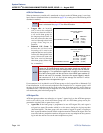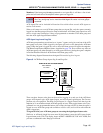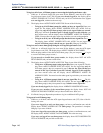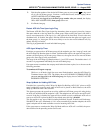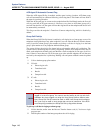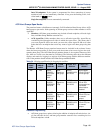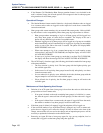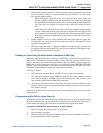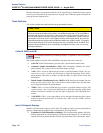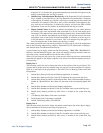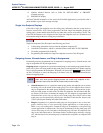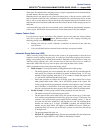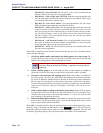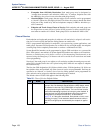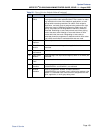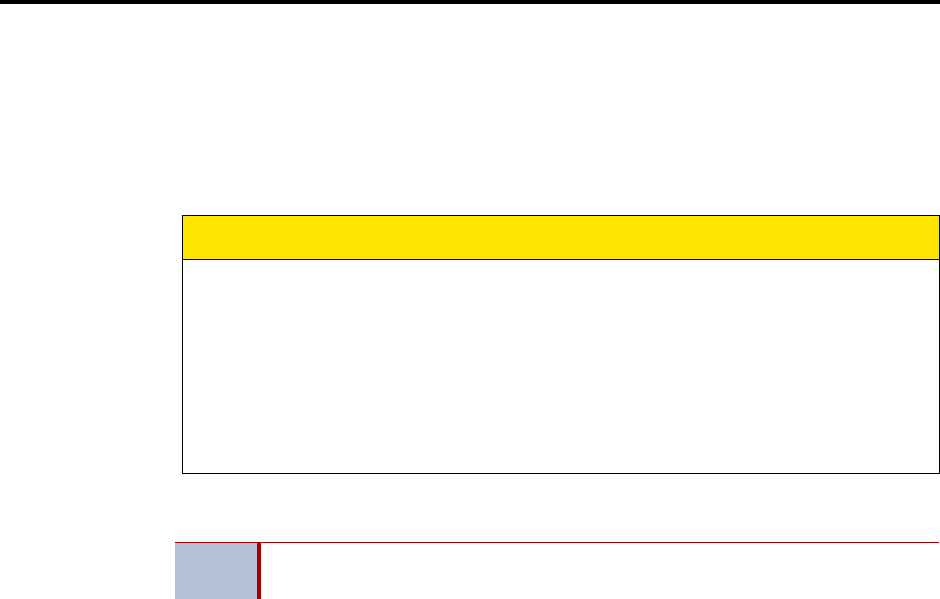
System Features
INTER-TEL
®
CS-5200/5400 ADMINISTRATOR GUIDE, ISSUE 1.1 – August 2005
Page 152 Trunk Features
Because the button is programmed with the ACD Agent Wrap-Up Terminate feature, agents
can also press the button to be removed from wrap-up mode. When the agent terminates the
wrap-up time, the lamp turns off.
Trunk Features
This section explains the trunk functions and programmable features.
Caller ID, DNIS, and ANI
The system supports Caller ID, ANI, and DNIS to data about the source of the call.
• Caller ID: Caller ID information gives the caller’s phone number and/or name.
• Automatic Number Identification (ANI): ANI information identifies the caller’s
phone number. The system receives a specified number of digits.
• *ANI*: This is a form of ANI that does not have a specified number of digits. The sys-
tem receives a star (*) before the ANI digits to signal the beginning of the caller’s
phone number. Then there is another star after the digits to signal the end of the ANI
information.
• Dialed Number Identification Service (DNIS): DNIS identifies the number that was
dialed to reach your location. The system receives a base number and a specified num-
ber of digits that identify the dialed number.
• *DNIS*: This is a form of DNIS that does not have a specified number of digits. The
system receives a star (*) before the DNIS digits to signal the beginning of the dialed
number. Then there is another star after the digits to signal the end of the DNIS infor-
mation.
• *ANI*DNIS*: This is a two-stage address service that provides both the caller’s phone
number and the dialed number. It combines the *ANI* and the *DNIS* features
described above.
Inter-Tel Endpoint Displays
Whether call information appears on the Inter-Tel endpoint display and what information
appears, is determined by endpoint flags in the database. The flags include:
• Expanded CO Call Information on Displays: This flag determines whether call infor-
mation (trunk name or call information) is displayed at the endpoint. If it is enabled, the
Outside Call Party Information Has Priority flag (described below) determines what is
CAUTION
Possible trunk misuse. While this system is designed to be reasonably secure against
CO trunk misuse by outside callers, there is no implied warranty that it is not vulnerable to
unauthorized intrusions and toll fraud. If the central office does not provide supervision it
will not disconnect the call when one party hangs up; it is possible for a caller to remain
connected to a CO trunk circuit. If this happens, and the caller begins dialing, the call could
be placed through the system and would then be billed to the system’s owner. The system
cannot check this type of call for toll restriction and may not register the call in SMDR. This
problem could arise when a call is connected to an endpoint or when a call is in an unsu-
pervised conference.
NOTE
The standard Advanced CO Interfaces feature is required to use the following
features.



